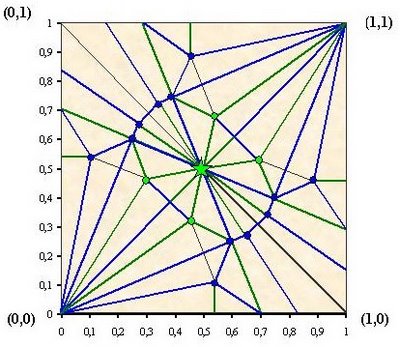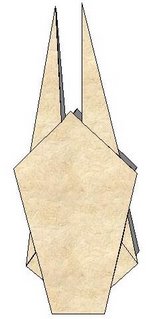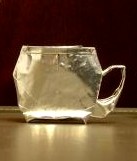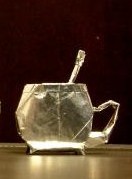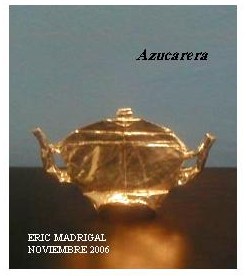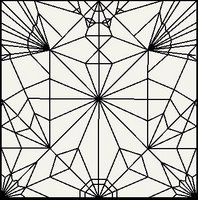A CHRISTMAS GIFT
Dear readers:
My blog in Spanish has four updates; however due to this special time, I decided to postpone the English version of updates till January and, instead offer you the present one. The wind brings us memory of Christmas and so I have decided to give you my CHRISTMAS GIFT. Hope you like it.
I would like to dedicate this entry to Juanjo. He joined the GOP group just a while ago; I don’t even know his real name nor his country, but the dialogue that I sustained with him in the forum of the group motivated me. Juanjo had asked for help to understand the CPs and I recommended a visit my page, to which he nicely answered: “Since I got interested in this thing about CPs, I have thought that Eric Madrigal is absolutely an eminence in this field” ("Desde que me interesé en esto de los CPs he pensando que Eric Madrigal es toda una eminencia en este campo"); phrase that I wish to answer from my blog and I do it as a way of confession, so that there is no doubt about the reality.
Juanjo thinks that I am an eminence in this matter of CPs which I must say that until today, I have only solved two CPs, one is the Elephant of Komatsu, and the other the Kiwi of Román Díaz. No more! To tell the truth, I am far away to be an eminence. If you and Juanjo read the head note of my blog, you will understand the purpose. I am learning how to solve CPs and I invite readers who wish to learn with me. My learning is meant to be slow, assimilating deeply every element, but efficiently. Clarity in assimilated ideas is the best tool to solve the jumble of rays and nuts of more complicated CPs.
If you read the entry before this one, you will notice that until now I have only studied the comet base. And that’s the reality! I am happy because when I see a complex CP, such as Alejandro Dueñas’s wolf, I am able to distinguish, in between the forest of lines, what corresponds to the comet base, even though I do not encourage collapsing it right now. Sorry!
So, you don’t have to be afraid of the CPs. We’ll get to it, slowly but efficiently, to solve the most complicated ones.
One of the consequences of a profound study of the CPs, of at least in my case, has been the motivation to create and this is the reason for this entry this 15 of December: To show you my first origami model, its CPMV an its collapsed base, so that for those who gets encouraged can make this easy but elegant model.
At last, the next entry will be published in the first days of January since it is difficult for me to update things with years-end parties.
Sincerely,
Ing. Eric Madrigal
Asociación Costarricense de Origami
1. MY FIRST ORIGAMI MODEL
WOULD YOU LIKE TO HAVE A CUP OF TEA?
Each model is made out of a foil-backed paper. The teapot is in a 25 cm x25 cm sheet of paper and both the cup and the cup with spoon are in a 12 cm x 12 cm. sheet paper. The model is not three-dimensional even though it has pockets that could contain some liquid.
About the CP of the TEAPOT, I don’t wish to do anything right now, so that you'll try to solve it. The collapsed base is also shown, and I think that you can easily get from it to the final model. I will be thankful if you could indicate me in the comments of by email if you could collapse the base, which is the original base for the references and also if you could obtain the final model. A picture will be appreciated. Many variations can be done to the final model, so with this CP you have got a lot to enjoy.
And so, wishing you all a HAPPY MERRY CHRISTMAS! Here is the CPMV of the TEAPOT and some other pictures of the model.
2. WITH OR WITHOUT SUGAR?
3. THANKS
I would like to show my gratitude and send an affectionate Christmas greeting to everyone that has given me their support in these months which I went into adventure in this blog.
Particularly, I wish to give thanks to José Ignacio Royo for his revision in the mathematical part of the blog.
To María José Sandí, for the effort she is making of translating this blog into French.
To Felipe Moreno who has given me the necessary incentive to keep going and the one who, since the next entry, will be the “checker” of the script.
To Elerth Leiva of Perú for his pictures and interpretations of the CPs.
To Román Diáz, Daniel Naranjo, Alejandro Dueñas for ceding me their CPs and pictures to elegantly illustrate each entry given till now.
To Diego Quevedo for his constant teaching about what is the interpretation of the CPs as well as the learning of the used software.
To Nícolas Terry for including my blog in his Web page.
To Origami Chile, Asociación Española de Origami, The Netherland Origami Association, a Gilad Aharoni's Origami Page and many more that have gladly added my link in their pages.
To the group of GOP which I belong and have put this blog in its service.
To the Asociación Costarricense de Origami
And finally to all the readers of my blog, both those that have left messages or comments and those that are completely anonymous.
FOR EVERYONE, I WISH YOU HAPPY MERRY CHRISTMAS!
In this blog, your commentaries are extremely important; please write them below. If you have neither an account nor a password, don’t worry, just click where it says anonymous (anónimo) and there you can write your message.
If you wish a copy of this document in pdf format, ask me for it at eric@internetelfaro.com that I will be glad to send it to you.

